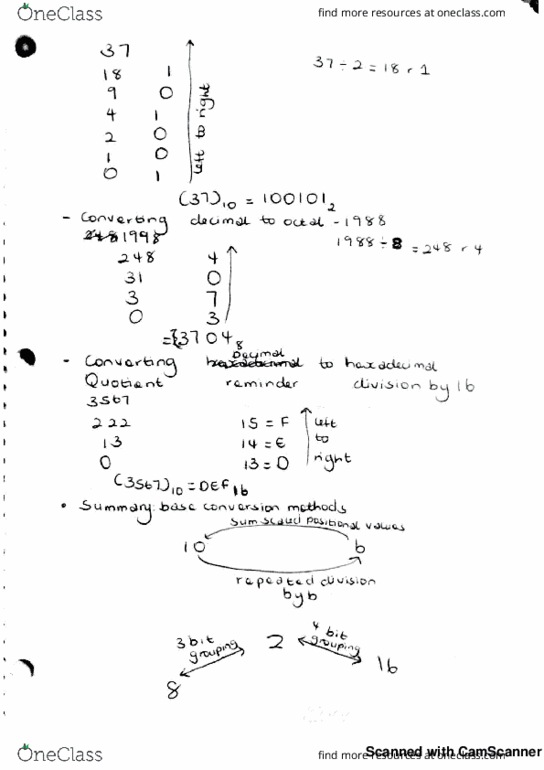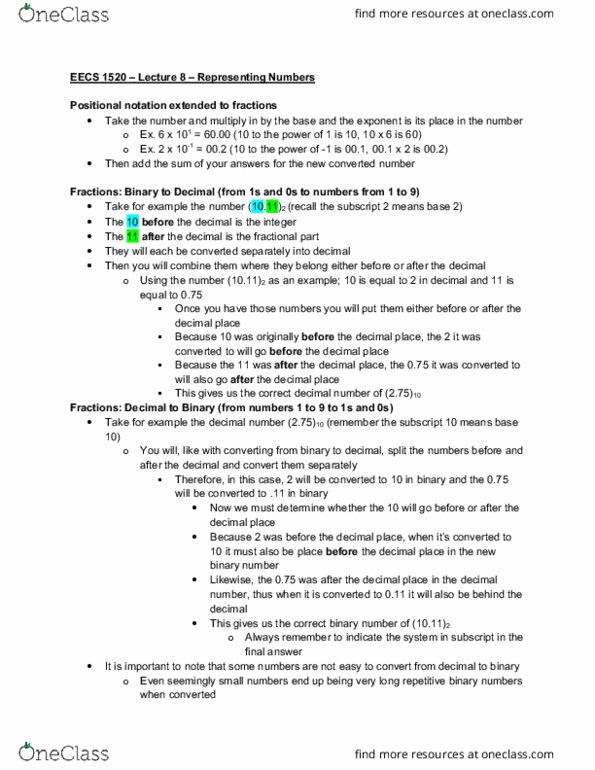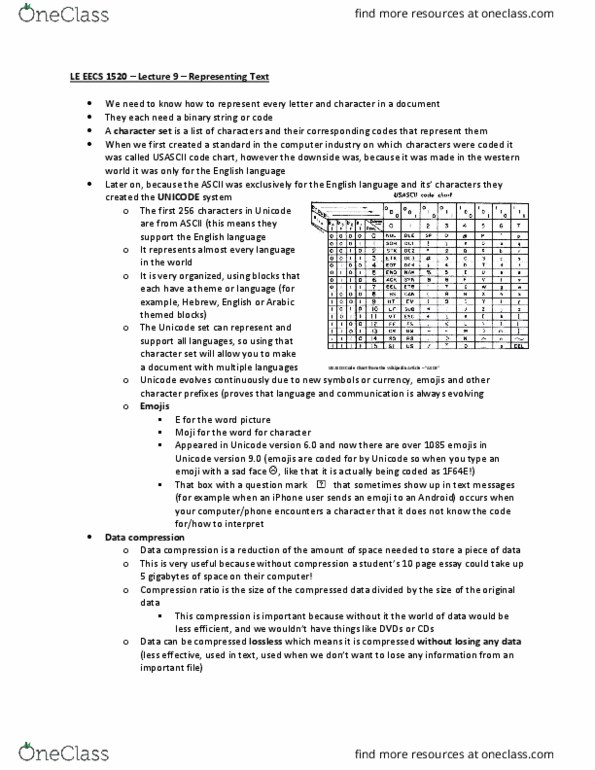EECS 1520 Lecture Notes - Lecture 8: Binary Number, Positional Notation, Real Number
EECS 1520 verified notes
8/14View all

EECS 1520 – Lecture 8 – Representing Numbers
Positional notation extended to fractions
• Take the number and multiply in by the base and the exponent is its place in the number
o Ex. 6 x 101 = 60.00 (10 to the power of 1 is 10, 10 x 6 is 60)
o Ex. 2 x 10-1 = 00.2 (10 to the power of -1 is 00.1, 00.1 x 2 is 00.2)
• Then add the sum of your answers for the new converted number
Fractions: Binary to Decimal (from 1s and 0s to numbers from 1 to 9)
• Take for example the number (10.11)2 (recall the subscript 2 means base 2)
• The 10 before the decimal is the integer
• The 11 after the decimal is the fractional part
• They will each be converted separately into decimal
• Then you will combine them where they belong either before or after the decimal
o Using the number (10.11)2 as an example; 10 is equal to 2 in decimal and 11 is
equal to 0.75
§ Once you have those numbers you will put them either before or after the
decimal place
§ Because 10 was originally before the decimal place, the 2 it was
converted to will go before the decimal place
§ Because the 11 was after the decimal place, the 0.75 it was converted to
will also go after the decimal place
§ This gives us the correct decimal number of (2.75)10
Fractions: Decimal to Binary (from numbers 1 to 9 to 1s and 0s)
• Take for example the decimal number (2.75)10 (remember the subscript 10 means base
10)
o You will, like with converting from binary to decimal, split the numbers before and
after the decimal and convert them separately
§ Therefore, in this case, 2 will be converted to 10 in binary and the 0.75
will be converted to .11 in binary
• Now we must determine whether the 10 will go before or after the
decimal place
• Because 2 was before the decimal place, when it’s converted to
10 it must also be place before the decimal place in the new
binary number
• Likewise, the 0.75 was after the decimal place in the decimal
number, thus when it is converted to 0.11 it will also be behind the
decimal
• This gives us the correct binary number of (10.11)2
o Always remember to indicate the system in subscript in the
final answer
• It is important to note that some numbers are not easy to convert from decimal to binary
o Even seemingly small numbers end up being very long repetitive binary numbers
when converted
Document Summary
Eecs 1520 lecture 8 representing numbers. Positional notation extended to fractions: take the number and multiply in by the base and the exponent is its place in the number, ex. 6 x 101 = 60. 00 (10 to the power of 1 is 10, 10 x 6 is 60: ex. 2 x 10-1 = 00. 2 (10 to the power of -1 is 00. 1, 00. 1 x 2 is 00. 2: then add the sum of your answers for the new converted number. Once you have those numbers you will put them either before or after the decimal place. Because 10 was originally before the decimal place, the 2 it was converted to will go before the decimal place. Because the 11 was after the decimal place, the 0. 75 it was converted to will also go after the decimal place. This gives us the correct decimal number of (2. 75)10.




